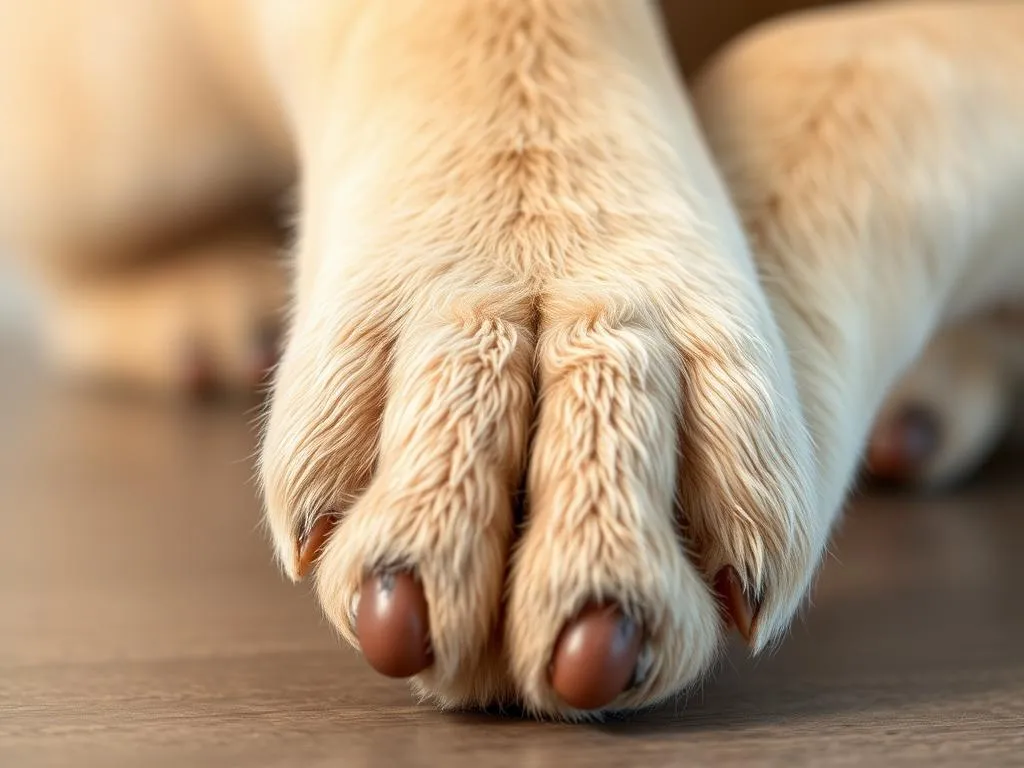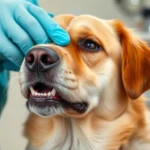
Understanding dog paw problems is crucial for every pet owner. Our dogs depend on their paws for mobility, exploration, and overall well-being. Recognizing the signs and symptoms of paw issues can make a significant difference in their health and comfort. Let’s delve deeper into the anatomy of a dog’s paw, the common conditions that arise, and how to address these issues effectively.
Understanding Dog Paw Anatomy
Structure of a Dog’s Paw
A dog’s paw consists of several key components, including pads, nails, fur, and bones.
- Pads: The pads are the soft, rubbery surfaces that provide cushioning and traction for your dog. They protect against rough surfaces and temperature extremes.
- Nails: Dog nails are essential for digging, gripping, and providing balance. Regular trimming is necessary to prevent overgrowth and associated issues.
- Fur: The fur between the toes can trap debris and moisture, leading to infections if not properly maintained.
- Bones: The paw bones provide structural support and allow for movement.
Understanding these components helps in recognizing how they contribute to overall paw health and the potential for dog paw problems.
Common Paw Conditions
Several conditions can affect the paws, including:
- Cracked pads: These can occur due to environmental factors or insufficient moisture.
- Ingrown nails: These can lead to pain and infection if not addressed promptly.
- Foreign body penetration: Objects like splinters or thorns can get lodged in the paw, causing discomfort or injury.
- Allergies affecting paws: Allergic reactions can lead to itching, swelling, and other symptoms.
Awareness of these conditions is essential for early detection and treatment.
Symptoms of Dog Paw Problems
Behavioral Signs
Observing your dog’s behavior can provide valuable insight into potential dog paw problems. Look for:
- Limping or favoring one paw: This could indicate pain or discomfort in that paw.
- Excessive licking or chewing on paws: Dogs will often try to soothe irritation or pain by licking their paws.
- Reluctance to walk or play: A dog that usually enjoys exercise may avoid it if they are experiencing paw problems.
Physical Signs
Physical symptoms can also indicate paw issues. Keep an eye out for:
- Redness, swelling, or inflammation: These can be signs of infection or irritation.
- Cracked or bleeding pads: This can signify severe dryness or injury.
- Abnormal nail growth or discolored nails: These may indicate underlying health issues or infections.
Recognizing these symptoms can help in seeking timely veterinary attention.
Common Causes of Paw Problems
Environmental Factors
Various environmental factors can lead to dog paw problems:
- Hot pavement and rough surfaces: Walking on hot or abrasive surfaces can damage paw pads.
- Seasonal allergies: Pollen, grass, and other allergens can cause itching and irritation in the paws.
- Chemical irritants: Substances like salt used for de-icing or harsh cleaning products can harm your dog’s paws.
Health Issues
Certain health issues can also contribute to paw problems:
- Skin infections: Bacterial or fungal infections can affect the skin on and between the paws.
- Allergies: Food and environmental allergies can manifest as paw issues.
- Genetic predispositions: Some breeds may be more prone to specific paw conditions, making awareness essential.
Identifying the root cause of paw problems is vital for effective treatment.
Diagnosis of Dog Paw Problems
Veterinary Examination
When you take your dog to the vet for dog paw problems, you can expect a thorough examination. The vet will:
- Inspect the paws for signs of injury, infection, or abnormal growths.
- Ask about your dog’s behavior and any changes you’ve noticed.
- Perform diagnostic tests such as skin scrapings or cultures to identify infections or allergies.
At-Home Assessment
You can perform an at-home assessment to check for potential issues:
- Inspect your dog’s paws regularly, looking for signs of injury, redness, or swelling.
- Check for foreign objects lodged in the pads or between the toes.
- Monitor your dog’s behavior for any signs of discomfort.
If you notice persistent issues, it’s essential to seek professional help.
Treatment Options for Dog Paw Problems
Home Remedies
There are several effective home remedies you can try for minor dog paw problems:
- Soothing soaks: Warm water soaks can help clean and soothe irritated paws. Adding Epsom salt can assist in reducing inflammation.
- Balms: Apply a dog-safe balm to cracked pads to promote healing.
- Proper paw cleaning techniques: Regularly clean your dog’s paws after walks to remove debris and allergens.
- Protective booties: These can help protect healing paws from further injury or irritation.
Veterinary Treatments
For more severe dog paw problems, veterinary treatments may be necessary:
- Prescription medications: Your vet may prescribe antibiotics for infections or anti-inflammatories for pain relief.
- Surgical options: In cases of severe injuries or ingrown nails, surgical intervention may be required.
- Follow-up care: After treatment, regular follow-ups may be necessary to ensure healing and prevent recurrence.
Consult your veterinarian to determine the best course of action for your dog.
Preventing Dog Paw Problems
Regular Maintenance
Prevention is key when it comes to dog paw problems. Regular maintenance includes:
- Nail trimming: Keep nails trimmed to prevent overgrowth and potential injuries.
- Paw pad care: Regularly check for cracks or debris and moisturize as needed.
- Grooming: Regular grooming can help prevent matting between toes and reduce the chance of infections.
Environmental Awareness
Be mindful of the environment your dog walks in:
- Monitor outdoor conditions: Avoid walking your dog on hot pavement or rough surfaces.
- Choose appropriate walking surfaces: Opt for grass or dirt paths when possible to reduce wear on paws.
Nutritional Considerations
A balanced diet plays a crucial role in skin and coat health:
- Ensure your dog is eating a high-quality diet that supports overall health.
- Consider supplements like omega fatty acids, which can promote healthy skin and paws.
When to See a Veterinarian
Signs of Serious Issues
It’s essential to know when to seek veterinary care for dog paw problems:
- If symptoms persist despite home care, it’s time to consult a veterinarian.
- Signs of potential infections, such as pus or excessive swelling, warrant immediate attention.
Establishing a Vet Routine
Regular veterinary check-ups are vital:
- Routine visits can help catch issues early before they become serious.
- Building a relationship with your veterinarian ensures your dog receives personalized care.
Frequently Asked Questions (FAQs)
Common Questions About Dog Paw Problems
What should I do if my dog has a cut on its paw?
Clean the wound gently with saline, apply a pet-safe antiseptic, and monitor for signs of infection. If the cut is deep or doesn’t improve, consult your veterinarian.
How can I tell if my dog has an allergy affecting its paws?
Look for signs like excessive licking, redness, swelling, or changes in behavior. A vet can perform allergy tests to determine the cause.
Are certain dog breeds more prone to paw issues?
Yes, some breeds, especially those with long hair between their toes or specific skin conditions, may be more susceptible to paw problems.
Expert Insights
Veterinarians recommend regular checks and maintenance for your dog’s paws. Keeping an eye on changes can help catch potential issues early. For comprehensive care, consider consulting with a veterinarian regularly to ensure your dog’s paws remain healthy.
Recognizing and addressing dog paw problems is vital for your pet’s well-being. Regular maintenance, awareness of symptoms, and proactive veterinary care can help keep your dog’s paws healthy and happy.









